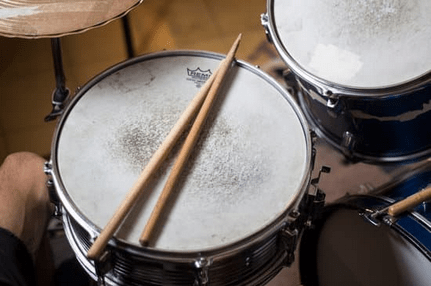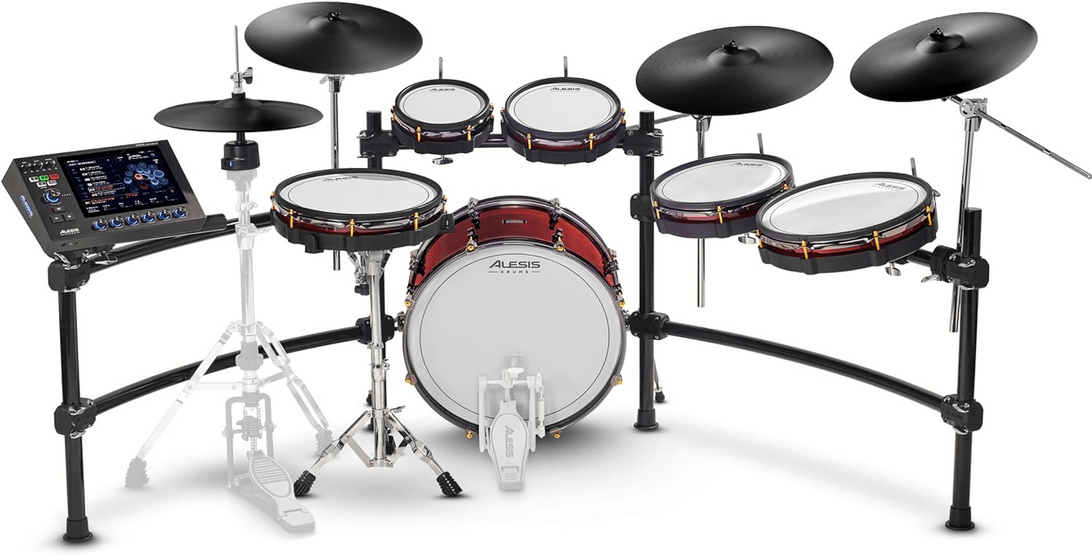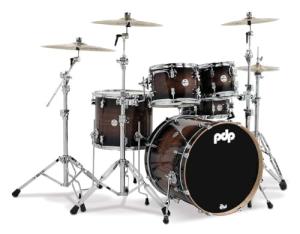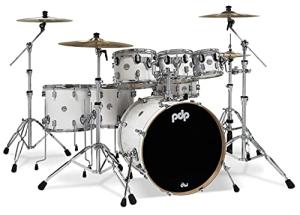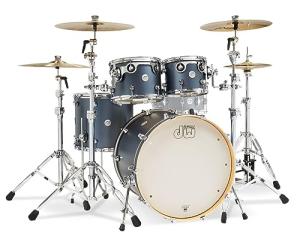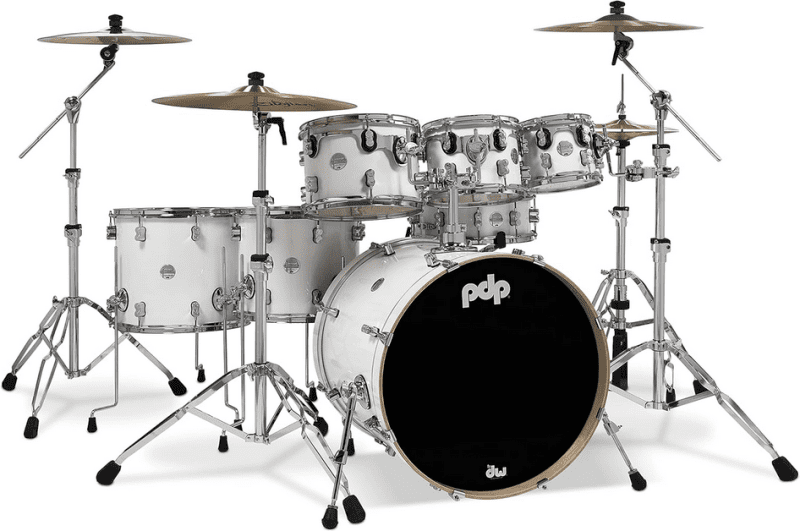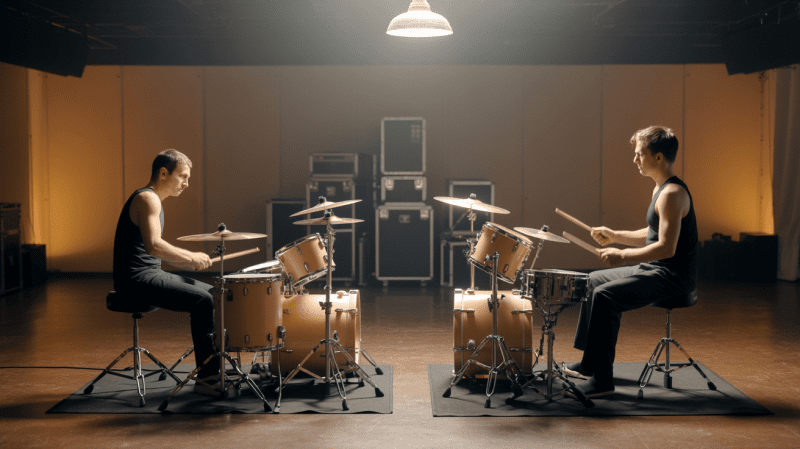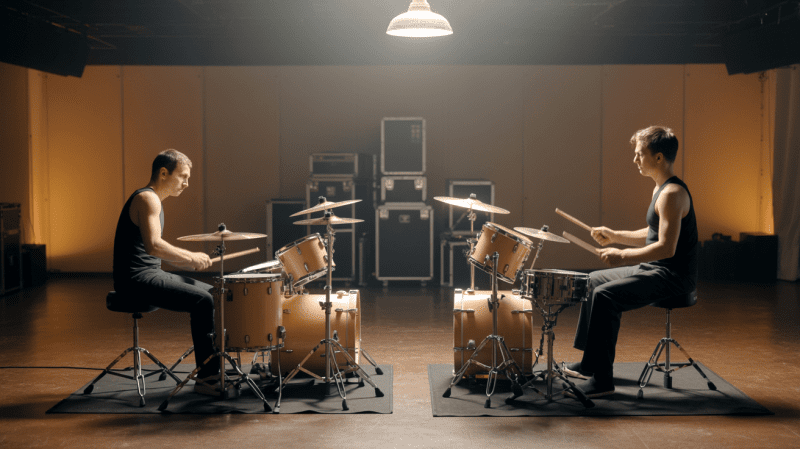Drumming’s gone through some wild changes, shaping how music feels in every era. From the most basic beats to today’s intricate patterns, drumming styles mirror both culture and technology. New techniques and gear have let drummers experiment, pushing drumming into something that’s always evolving.

Looking back at each decade, you’ll notice that drumming didn’t just tag along with music it often led the charge. Drummers started mixing sounds, layering rhythms, and stretching what was possible. The result? A broader, more creative set of styles that shaped whole genres.
By digging into these shifts, we can see how drumming keeps its spot at the heart of music. Every change tells a story of drummers adapting, experimenting, and keeping their art fresh. It’s no wonder drumming keeps pulling us in and inspiring musicians everywhere.
Key Takeaways
- Drumming grew from basic beats into complex rhythms.
- New techniques and setups changed what drummers could do.
- Drumming styles echo shifts in music and culture.
Foundations of Drumming: Early Styles and Innovations

Looking at drumming's roots gives us real insight into its impact on music today. Early on, drummers worked with simple rhythms and basic percussion instruments. But as new ideas and tools came along, the drum kit emerged, and fresh playing styles followed. Different cultures brought their own traditions into the mix, too.
Origins of Percussion in Popular Music
Percussion’s about as old as music itself. Early drums were pretty basic—wood, animal skins, nothing fancy. People used them in military marches or folk music to keep a beat.
By the 19th century, as popular music took off, percussion mostly marked time. Soldiers carried bass drums and snare drums for marching. This set the stage for more complicated patterns that came later.
Development of the Drum Kit and Key Components
The drum kit came together between the late 1800s and early 1900s. Suddenly, one person could play a bunch of percussion instruments at once.
The bass drum, snare drum, and tom-toms stood out as the essentials. The bass drum brought the low thump, the snare added a sharp snap, and tom-toms filled in with deeper tones. Cymbals and hi-hats joined in to shake things up.
With this setup, drummers got way more creative. It became the backbone of jazz, rock, and just about any popular style you can name.
Influence of Early Drum Traditions
Early drumming drew from all over the world. African rhythms brought in complex beats and call-and-response, shaping jazz and blues. European military drumming focused on precision and steadiness.
In American cities, these traditions collided, and new drumming styles popped up. Native rhythms inspired syncopation. Different drums—hand drums, sticks, you name it—expanded what drummers could do.
Modern drumming owes so much to these roots. They turned percussion from just keeping time into a real musical voice.
Transformative Decades: Shifts in Drumming Techniques
Drumming took some wild turns as new styles and tech came in. You see it in jazz and swing rhythms, bigger rock setups, electronic sounds in pop, and the way standout drummers changed the game.
The Rise of Jazz and Swing Drumming
Jazz made drumming a real creative force. Early jazz drummers leaned on vintage kits, using the hi-hat and bass drum pedal for syncopation.
Swing music pushed them to build steady but loose grooves. The hi-hat cymbal became crucial for timekeeping, and brushes on snares softened the edges.
Drummers started improvising in solos, breaking away from stiff military beats. Rhythm became a big part of jazz’s feeling and energy.
Rock Era Revolution: From Vintage Drum Kits to Ringo Starr
Rock shook things up again, especially with The Beatles. Ringo Starr made simple, catchy drum parts cool.
Drum kits grew—bigger bass drums, more cymbals, louder sounds. Better bass drum pedals meant faster, heavier beats.
As technology improved, drummers started adding toms and double bass pedals. Audiences noticed, and drumming became a show of its own.
Pop and Electronic Music Influences on Rhythmic Form
Pop music brought in catchy, danceable beats, and electronic music changed the game with drum machines and synth sounds.
Drummers started mixing acoustic kits with electronic pads and triggers. The Wurlitzer and other electric gear also shaped rhythm.
This mash-up of electronic and acoustic made for new grooves, and drumming got more flexible—ready for whatever the crowd wanted.
Modern Drumming Icons: The Dave Grohl Impact
Dave Grohl brought a raw, punchy style that loads of drummers tried to copy. With Nirvana, he blended punk power and rock-tight rhythms.
He used bigger kits and devised his own setups. Those pounding bass drums and sharp snares—you could feel the energy.
Grohl showed that drummers could drive a band’s sound, not just back it up. Honestly, he made drumming feel urgent and central to rock again.
Contemporary Approaches and Future Trends
These days, drummers blend old-school chops with new tech. Electronic gear, fresh drum designs, and rhythms from everywhere keep things interesting. The way we hear drums in pop music keeps shifting.
Hybrid Setups and Electronic Integration
Many drummers now use hybrid kits, mixing acoustic drums like snares with electronic pads and triggers. That means we can pull off all kinds of sounds live, so no instrument swap is needed. Electronic music especially leans on these setups for unique beats and textures.
With electronic elements, we can toss in samples, loops, and effects on the fly. It makes shows way more dynamic. You’ll see hybrid kits everywhere in pop and electronic scenes—blending real drum tones with synthetic ones is just part of the job now.
Innovations in Percussion Instruments
Modern drumming’s got some cool new toys. Electronic snares can sound like any drum, letting us tweak tone and volume however we want.
Drum makers now build kits with adjustable parts, so setting up and customizing are quick. Some even have built-in digital processors, so you can swap sounds without extra gear.
All these changes make drumming more flexible for any style, from jazz to club music. It’s a good time to be a drummer, honestly.
Signature Rhythms and Global Influences
Global music traditions shape the way we drum today. We pull rhythms from African, Latin, and Asian cultures, weaving them into patterns that give popular music a real sense of depth.
Artists love to mix traditional beats with modern grooves, building signature styles that people recognize everywhere. This blending sparks a conversation between cultures, letting drumming techniques travel far beyond their roots.
As we continue to investigate these global influences, drumming evolves. The sounds keep getting more varied; honestly, that keeps it exciting.
DISCLAIMER
This document is provided for general information purposes only and should not be relied upon as providing legal advice, technical, or specific operational guidance to the reader, whether as to the practices described in the document or the applicable legal requirements and regulations. Percussion Pros. Com expressly disclaims any responsibility for liability arising from or related to the use or misuse of any information in this document.
